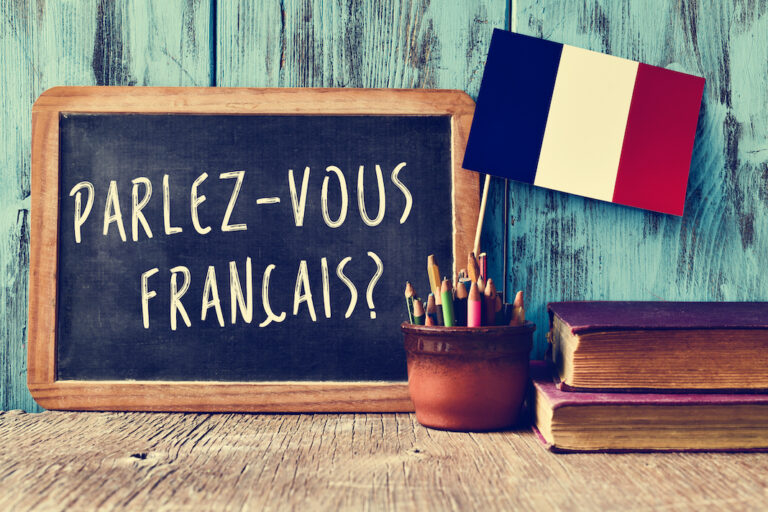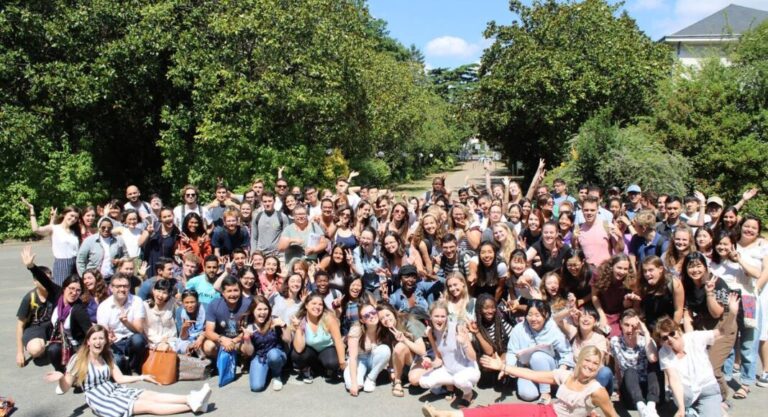(Sponsored Post) In the US, only one in four Americans is able to hold a conversation in another language. Across the Atlantic, one in four Europeans is bilingual. Moreover, even though French is the 5th most spoken language in the world and the 3rd most spoken language in business, only a meager 0.4% of the US population can speak it.
It’s time for Americans to get back to learning French. Besides the high value of multilingualism on the job market, learning French is also a great way to meet new people, engage with a new culture, and boost your brainpower with a stimulating challenge.
The truth about learning French
Let’s be clear, learning French doesn’t have to mean sitting through some sort of high school class where a teacher tries to teach grammar to a group of 20 bored kids. In fact, learning a language this way can take forever for one reason: language immersion starts and stops at the door of the classroom.
Do you remember how you learned english? Did your parents start grammar lessons when you were one year old? Probably not. In reality, you have been listening to and mimicking their language, in a full immersion context. Grammar lessons came later, as a tool to better structure your knowledge of English.
Full immersion is how you should learn a foreign language as well. Grammar is definitely important, but the focus is listening and mimicking in an immersive context.
Language immersion doesn’t necessarily mean going abroad, it means using exclusively one language at a time. If a 24/7 commitment seems overwhelming, plan bite-sized French immersion sessions on weekends, in the evenings, at lunch, or anytime that’s convenient for you. During your immersion hours, you’ll speak, read, and listen to French to improve comprehension, reading, and language skills.
Use free resources to improve your comprehension
Luckily, most everyone has access to tons of free content right in the palm of our hands. First, switch your phone to French. You know your way around your phone in English, and you’ll most likely be fine in French. This is a good way to learn new vocabulary, as well as reminding you of your goal every time you grab your phone.
YouTube is an amazing resource for finding free French content, such as web series, vlogs, online classes, and music. The web series Oh La La, Hollywood Speaks French, for example, is specifically made for French learners. The content focuses on daily situations rather than grammar, so you can learn situational vocab you’ll actually use. Plus, the actors speak slowly and there are subtitles to help you understand. Another great language (and cultural resource) is Netflix. They have a surprisingly extensive selection of French movies which you can watch with subtitles if needed.
Work on your grammar (but not too much!)
Though grammar shouldn’t be the main focus of your studies, it is necessary to learn. YouTube, again, is full of free French grammar lessons. Or, if you are willing to invest some money, check out language learning online platforms like Babbel, Rosetta Stone, or Fluentu. For the most personally catered experience, take private classes with a French tutor. Regardless of how you learn grammar, the most important thing about grammar is that you don’t get sucked into only learning grammar. Grammar is just one part of the journey of learning a foreign language! If you let grammar take over your language learning time, you’ll get bored, lose focus, and give up.
Find a buddy to practice conversation skills
With 274 million French-speakers in the world spread across five continents, chances are you can find a community of French-speakers near you. Approach l’Alliance Française, check out the student groups at your surrounding universities and community colleges, or try to identify French-speaking groups in your area on Facebook or MeetUp. Besides the chance one of your new friends will make you crêpes, having people around you to practice conversation is key for improving daily language skills.
Of course, you can’t have a buddy around all the time, and maintaining a French-speaking environment can be stressful. French-speaking territories provide a chance to be surrounded by language buddies, and you don’t have to maintain the environment to be all-French — it just is!
Go on a French immersion trip
Going to France might be expensive, but luckily, French is spoken outside of France. You can find French-speakers quite close to the US, in Quebec, Canada. The biggest city in Quebec, Montréal, is quite bilingual. For a full-immersion experience, Québec City is 100% French-speaking and full of culture.
Located in downtown Québec City, the school Edu-inter specializes in French Immersion trips for adults and teenagers all year round. The students, who take a pledge to only speak French during their trip, have classes in the morning and activities based on their interests in the afternoon. One trip highlight is exploring the Historic District of the city, which is an UNESCO World Heritage Site. For a fuller immersion experience, students can choose to be hosted in French-speaking homes. With these full immersions programs, students can achieve their language goals quickly. To learn more about Edu-inter programs feel free to contact them on Facebook or through their website.
Note: Sponsored Articles do not belong to the editorial team at Frenchly. They are provided or written at the request of the advertiser, who determines the content.








